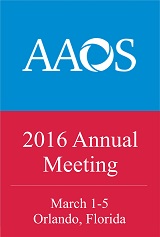
AAOS 2016: Non-particulate and particulate steroids equally effective for radiculopathy

AAOS 2016: Non-particulate and particulate steroids equally effective for radiculopathy
Are Non-Particulate Steroids Less Effective than Particulate Steroid for Cervical & Lumbar Radiculopathy?
Did you know you're eligible to earn 0.5 CME credits for reading this report? Click Here
CONFERENCE ACE REPORTS
This ACE Report is a summary of a conference presentation or abstract. The information provided has limited the ability to provide an accurate assessment of the risk of bias or the overall quality. Please interpret the results with caution as trials may be in progress and select results may have been presented.
Synopsis
4 randomized controlled trials (RCTs) were included in this meta-analysis to compare the efficacy of particulate steroids and non-particulate steroids in transforaminal epidural injections in patients with cervical/lumbar radiculopathy. Pooled results indicated no significant differences in the number of patients who demonstrated a 50% reduction in symptoms and change in pain from pre- to post-inj...
To view the full content, login to your account,
or start your 30-day FREE Trial today.
FREE TRIAL
LOGIN
Forgot Password?
Explore some of our unlocked ACE Reports below!

Learn about our AI Driven
High Impact Search Feature
Our AI driven High Impact metric calculates the impact an article will have by considering both the publishing journal and the content of the article itself. Built using the latest advances in natural language processing, OE High Impact predicts an article’s future number of citations better than impact factor alone.
Continue



 LOGIN
LOGIN

Join the Conversation
Please Login or Join to leave comments.